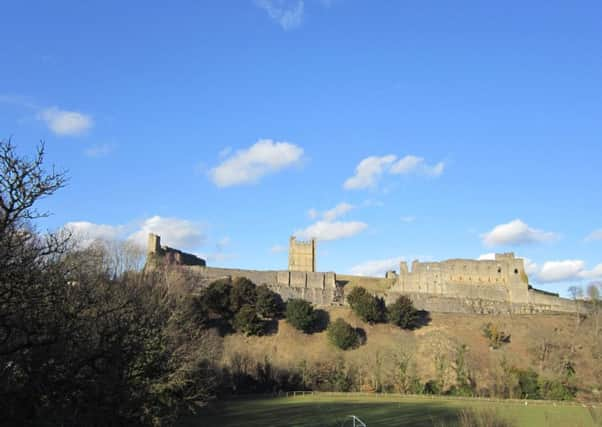Yorkshire's house price winners and losers


The total value of the UK’s housing stock has passed the £7 trillion mark for the first time ever and now stands at £7.14 trillion, having risen 34 per cent in the past ten years, according to analysis published by Savills.
“This represents a phenomenal £1.82 trillion gain over the decade, even accounting for sharp house price falls in the post credit crunch years,” says Lawrence Bowles, residential research analyst at Savills. “Our analysis reconfirms housing’s position as the UK’s largest store of private wealth, its value equivalent to almost ten times the UK Government’s total income in 2017.”
Advertisement
Hide AdAdvertisement
Hide AdThe study looks at the total value of housing in each local authority district across Britain. It is based on a range of factors, including average house prices, the number of homes and the different types and tenures of residential properties in the area.
In Yorkshire, the highest value district is Leeds, which has a total housing value of £55.6 billion. Sheffield is second with residential property worth £38.4 billion.
The lowest value districts are desirable but more sparsely populated rural locations. Richmondshire is at the bottom of the list. Its homes are worth a combined total of £4.9 billion. In Craven the value of residential property is £6 billion and in Ryedale it is £6.5 billion.
Lawrence Bowles says: “Districts with higher average house prices often end up having a lower total housing value on account of there being fewer homes in more expensive rural areas. In Richmondshire, for example, the average house price in 2017 was £231,880, according to Land Registry, but the total value of homes in that district was £4.7 billion – less than a tenth of Leeds, where the average house price was £206,000.”
Advertisement
Hide AdAdvertisement
Hide AdMost local authority areas in Yorkshire showed an increase in total property values over the past ten years. Only three recorded a loss. Scarborough saw £360m wiped off its housing stock. Hull had a decline of £236m and Bradford suffered a fall of £170m.
Sheffield and Leeds topped the table for the largest growth in total values in Yorkshire last year. Sheffield’s increasing popularity was evident as the value of homes there rose £2.9 billion, giving it first place above Leeds, which saw a growth of £2.3 billion.
Ben Pridden, head of residential sales at Savills York, adds: “This data brings together a broad comparison of housing stock, incorporating everything from £50,000 studio apartments to £10 million country houses. It is unsurprising that areas such as Leeds, Hull and Sheffield are beginning to catch up with the traditionally high value areas such as Ryedale, Harrogate, York and Hambleton and these signs of continued growth are good news for the county as a whole.”
At a national level, the pattern of growth has seen a radical shift. “We saw London’s share of the UK’s housing value drop last year for the first time since 2005,” says Lawrence Bowles. “Affordability pressures are now limiting price growth in the capital. But while stretched affordability is constraining growth in high value housing markets, the Midlands, North and Scotland have all grown faster this year than previously.”
Advertisement
Hide AdAdvertisement
Hide AdAccording to the latest Land Registry data, average Yorkshire house prices fell by 0.1 per cent between January and February this year, mirroring the UK trend. The North East experienced the greatest monthly price rise, up by 3.1 per cent and London saw the most significant monthly price fall, down by 2.1 per cent.
There has been an annual price rise of 4.4 per cent between February 2017 and February 2018, which takes the average property in the UK to £225,047.
In Yorkshire, Richmondshire saw the greatest annual increase. Prices there grew by 12.9 per cent. This could be due, in part, to transport links to the area, which includes Richmond and large part of the Dales. The A1, which runs close by, has been upgraded to a three-lane motorway between Leeming and Barton. The drive between Richmond and Leeds is now an hour and 10 minutes and Richmond to Newcastle now takes an hour.
Ryedale, which includes the increasingly popular market town of Malton, showed the second largest rise at 7.9 per cent. Scarborough, which has benefitted from regeneration, saw prices climb by 6.4 per cent.
Advertisement
Hide AdAdvertisement
Hide AdBuyers are waking up to the charms of Wakefield and its easy access to Leeds and a 6.2 per cent uplift in prices reflect this. Elsewhere, Leeds saw a 5.7 per cent rise; the East Riding 5.3 per cent,
Sheffield five per cent; North Yorkshire 4.6 per cent; Calderdale 4.4 per cent; Hambleton 4.3 per cent; Kirklees 3.9 per cent; Harrogate 3.3 per cent; Craven 2.5 per cent; Hull 2.4 per cent; Selby 2.2 per cent; Bradford 1.9 per cent; York 0.6 per cent and Rotherham 0.8 per cent. Barnsley at minus 0.3 per cent and Doncaster at minus 0.9 per cent were the only areas to record an annual fall in prices between February 2017 and February 2018.